Gobo sushi is a super simple vegan sushi recipe made with just three ingredients. If you’re looking for a new kind of sushi to make at home, give this refreshingly tangy roll a try!
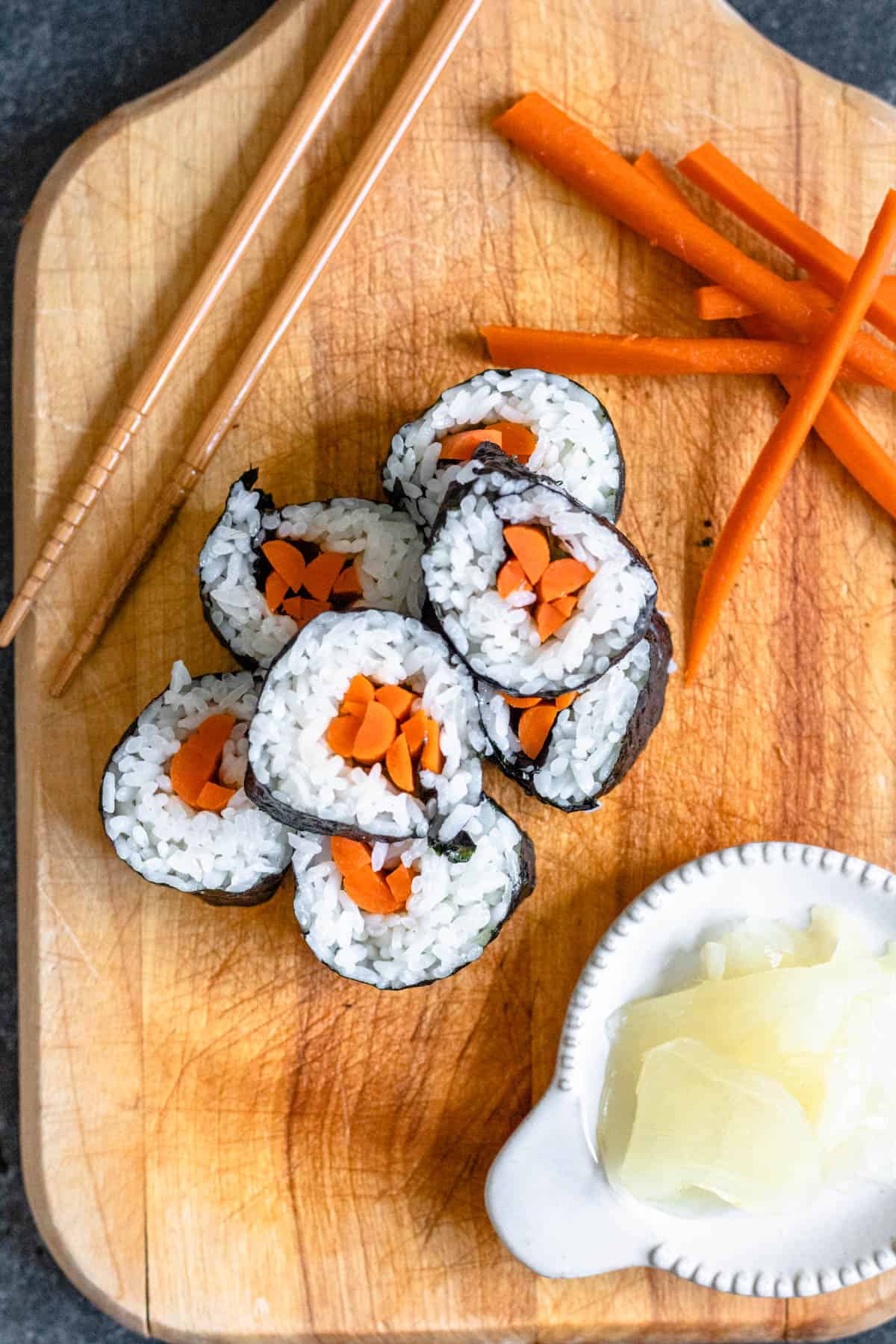
Hello Reader! I try my hardest to research recipes as best as I can before posting to ensure I am representing each culture correctly. If this recipe is from your country and I have made a mistake or you have suggestions for how to make it more authentic, I would love to hear! Please leave a comment below letting me know what should be different, and I will rework the recipe. It is always my intention to pay homage and respect to each cultural dish that I cook. Thanks for reading!
You may have seen a bit of orange sticking out of your favorite Japanese dish in the past and wondered what it was. Gobo, or pickled burdock root, is popular in many Japanese recipes. It offers a mild tangy flavor to sushi rolls, miso soup, salads and other side dishes.
Gobo usually is a simple ingredient in recipes. In this recipe, gobo becomes the star and the main ingredient of the roll. If you’ve been looking for a new roll to add to a sushi dinner–or want a sushi recipe that isn’t focused on raw fish – look no further.
Burdock is a rough looking vegetable, but when it is brined in vinegar and sugar, it becomes soft enough to enjoy and still refreshingly crisp.
Roll it up in some sushi rice and nori (seaweed sheets) and you’ve got an incredibly easy sushi roll that is healthy and delicious (check out this post for 16 Different Sushi Recipes)! It may quickly become your favorite vegetarian sushi roll.
Recipe Origins
Gobo, or yamagobo as it is sometimes called, has been used in Japanese cuisine for centuries to add color, crunch and flavor to various dishes.
Gobo is actually the root of the burdock plant and looks like a tree root. This plant is resistant to extreme temperatures and may have actually originated from the Siberian region of Northern Asia. The strange root has made its way through Europe, but it is most commonly used in Asian recipes and holistic medicine.
The root is actually brown when pulled from the ground and can be several feet long. The skin is extremely tough and has a thick layer of grit, but the flesh inside is similar in texture to a carrot.
In Japan, Japanese burdock root is harvested in the fall, shaved and sliced very thin. For pickling, they are placed in a brine of rice vinegar, sugar and salt, along with orange food coloring or powdered carrot to give it an orange color.
Gobo is popular for kinpira gobo, a recipe that calls for sauteing and then simmering sliced carrots and burdock root in a marinade, but pickled gobo shows up in many traditional Japanese recipes. It is sold canned or packaged.
What is Gobo Root?

Gobo root comes from burdock, a spiny plant with purple stems. It’s related to sunflowers and artichokes. It can be found in Europe and Asia but it also grows wild like a weed all over the world. The plant itself is not very pretty but the root is the edible portion.
You might be able to find the long root for sale at your local Japanese grocery store, next to the other root vegetables. If you want to save yourself the trouble of pickling the root yourself, you can find it already dyed orange in a package.
Why Make This Recipe?
- Try a Meatless Sushi: If you want a vegetarian or vegan sushi roll to try, this is a great one! The only filling in this sushi roll is the pickled burdock. You may be surprised by how flavorful this roll is!
- Simple Ingredients: It doesn’t get any easier than this! Just four ingredients for this simple roll that can be an addition to a sushi dinner or enjoyed on its own.
- Easy to Put Together: If you’ve never used a sushi roller, this is a great recipe to experiment with. You might be feeling intimidated but it’s really simple to roll this Gobo Sushi because it has so few ingredients!
What Do I Need To Make This Recipe?
Ingredients
Here is a visual overview of the ingredients in the recipe. Scroll down to the recipe at the bottom for quantities.
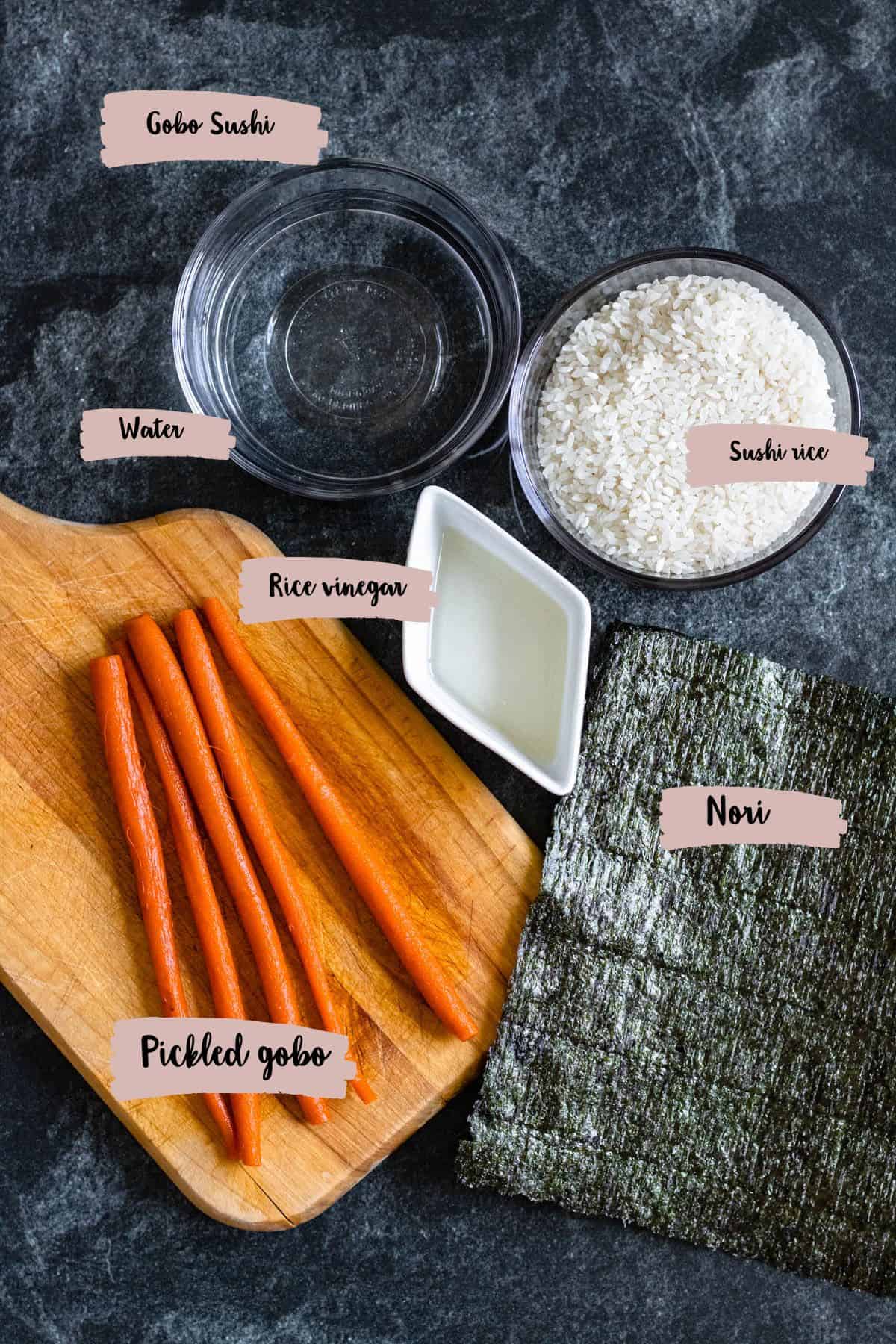
- Pickled Gobo (Burdock Root): You can find gobo already pickled in most Asian supermarkets. If you’re feeling extra ambitious you could even pickle your own burdock root!
- Sushi Rice: Japanese sushi rice is the best rice to use for this recipe. You can find it at an Asian supermarket. It’s a short-grain rice that is chewy and sticky and is perfect for holding a roll together. You can use plain white rice if that’s all you have on hand but your roll may dry out a little quicker or not hold together as well.
- Rice Vinegar: Rice vinegar adds great flavor to your rice and brings out an extra layer of flavor in your gobo too. It also makes the texture perfect for rolling.
- Seaweed (Nori): You can find sheets of seaweed in most supermarkets in the Asian food aisle or you can purchase it online (affiliate).
Tools
- Sushi Rolling Mat: You can find these small, bamboo mats at any Asian supermarket or purchase one online (affiliate). The bamboo mat is rectangular, about the size of a piece of paper, and rolls up to be very compact. It’s a great tool to have in your kitchen if you don’t already!
- Plastic wrap: I like to use some plastic wrap over my rolling mat to help keep it and my fingers clean, but it’s not necessary. It just makes for easy cleanup!
How to Make This Recipe
Step 1: Prepare your Rice
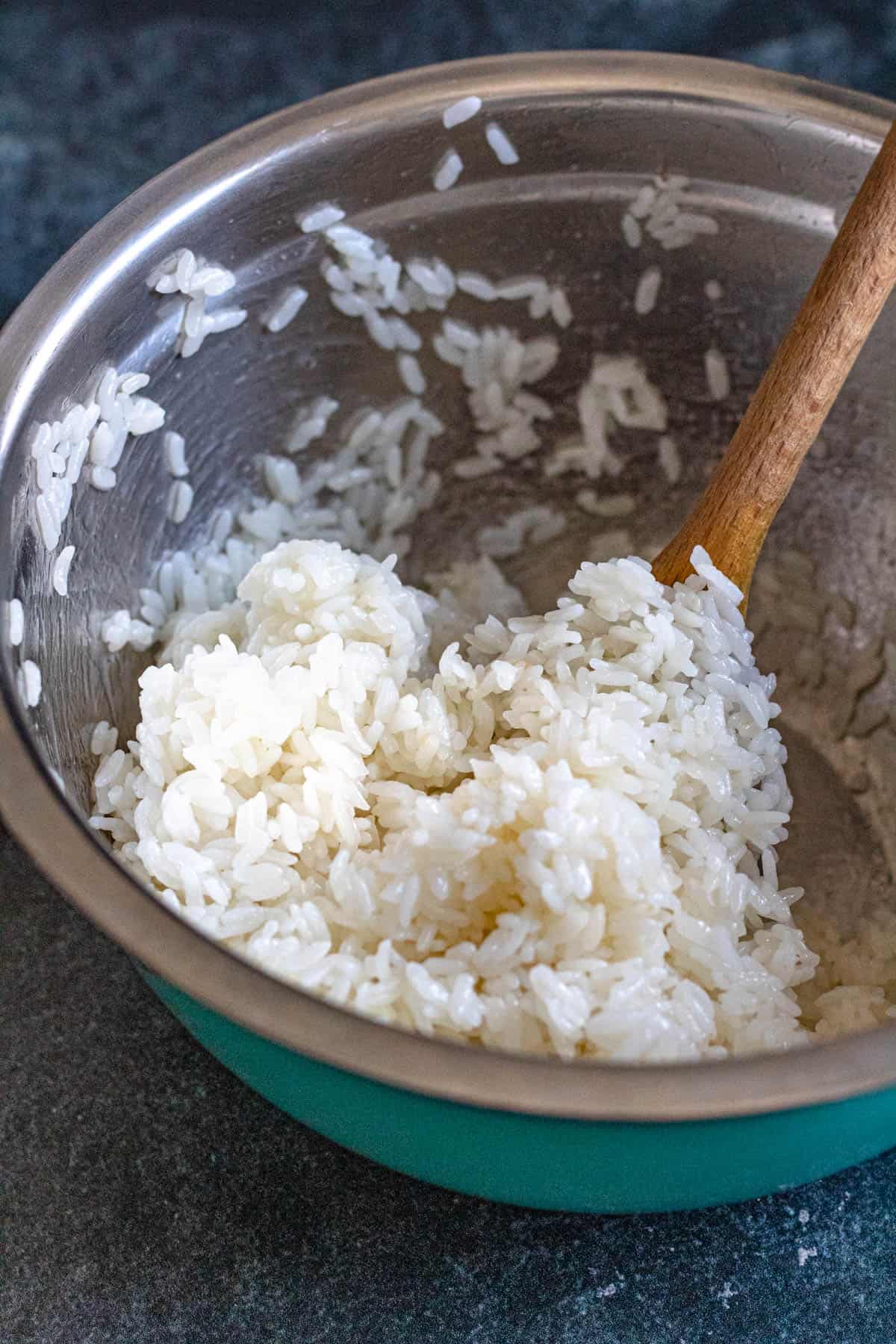
Once the sushi rice has been cooked according to the package instructions, pour the 2 tbsp of seasoned rice vinegar over the rice. Mix to coat the rice, then set the rice aside to cool a bit.
Step 2: Assemble your Rolls
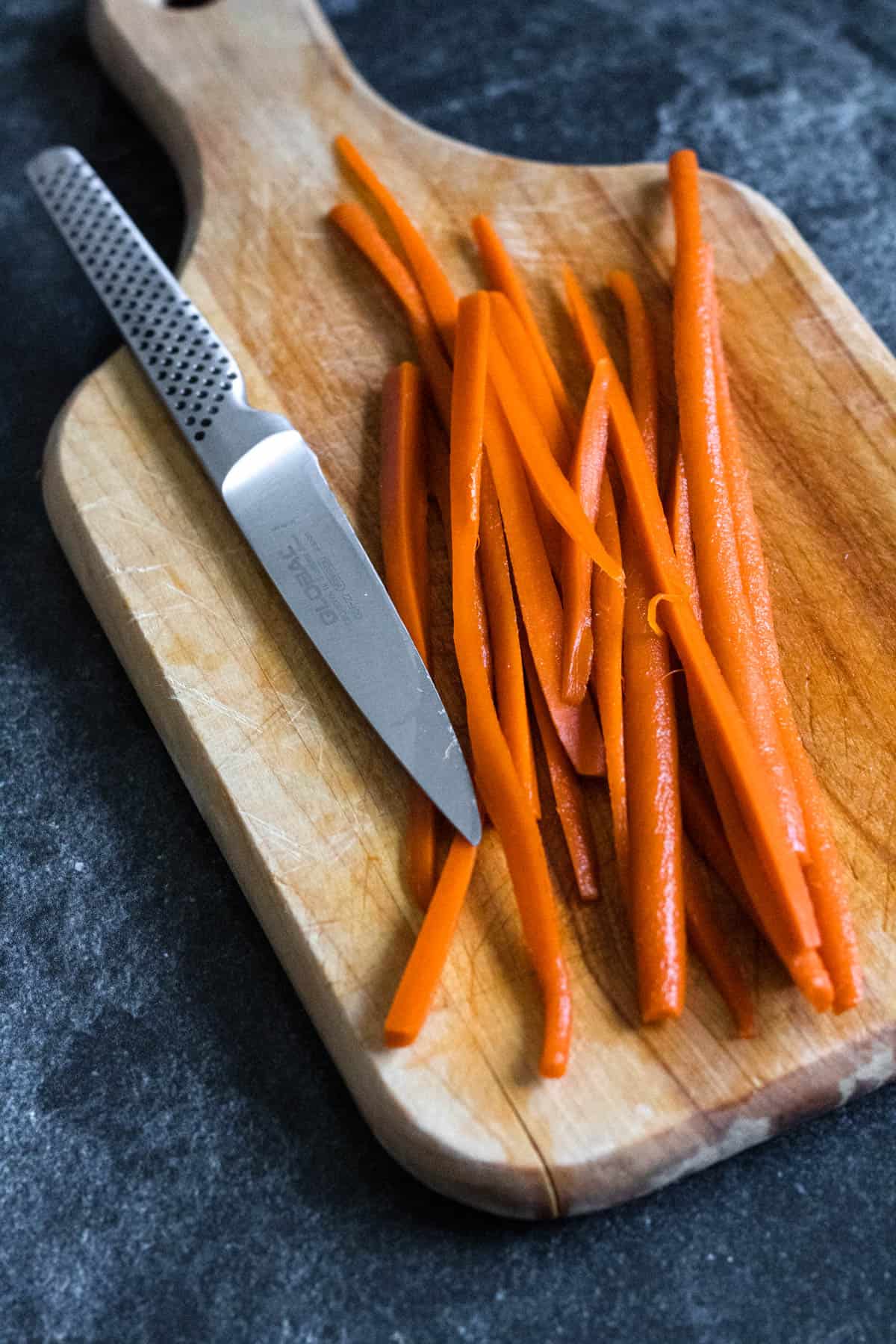
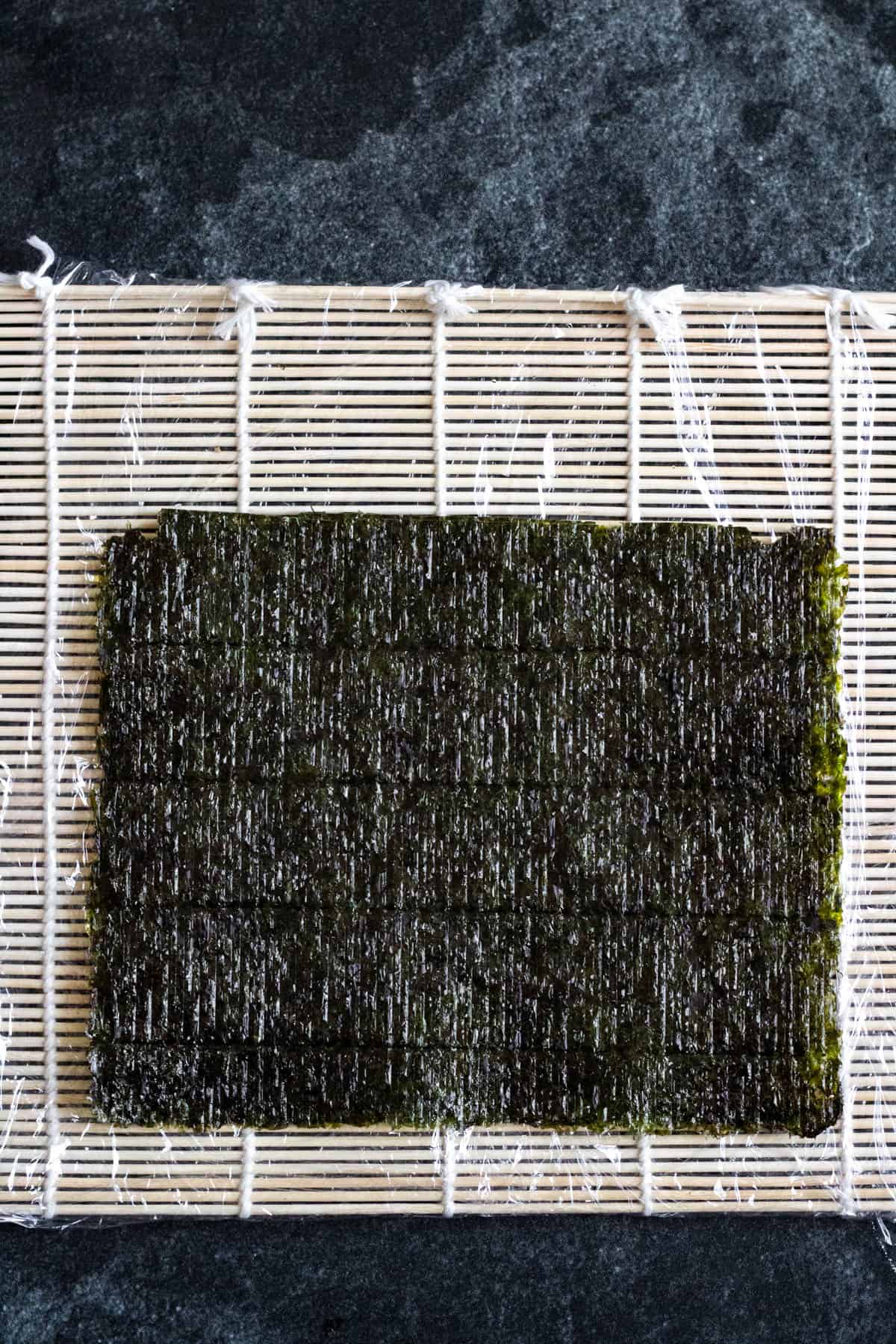
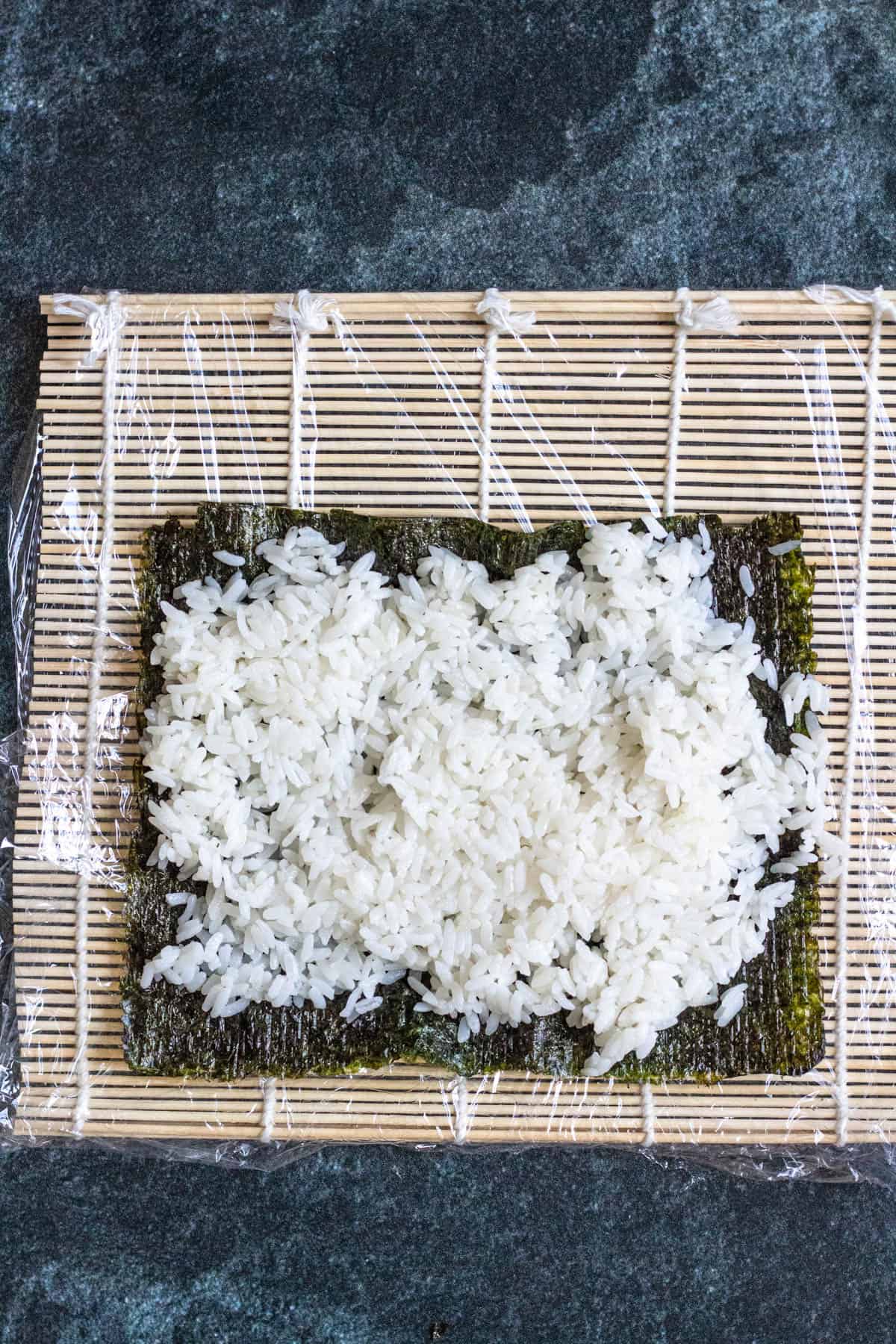
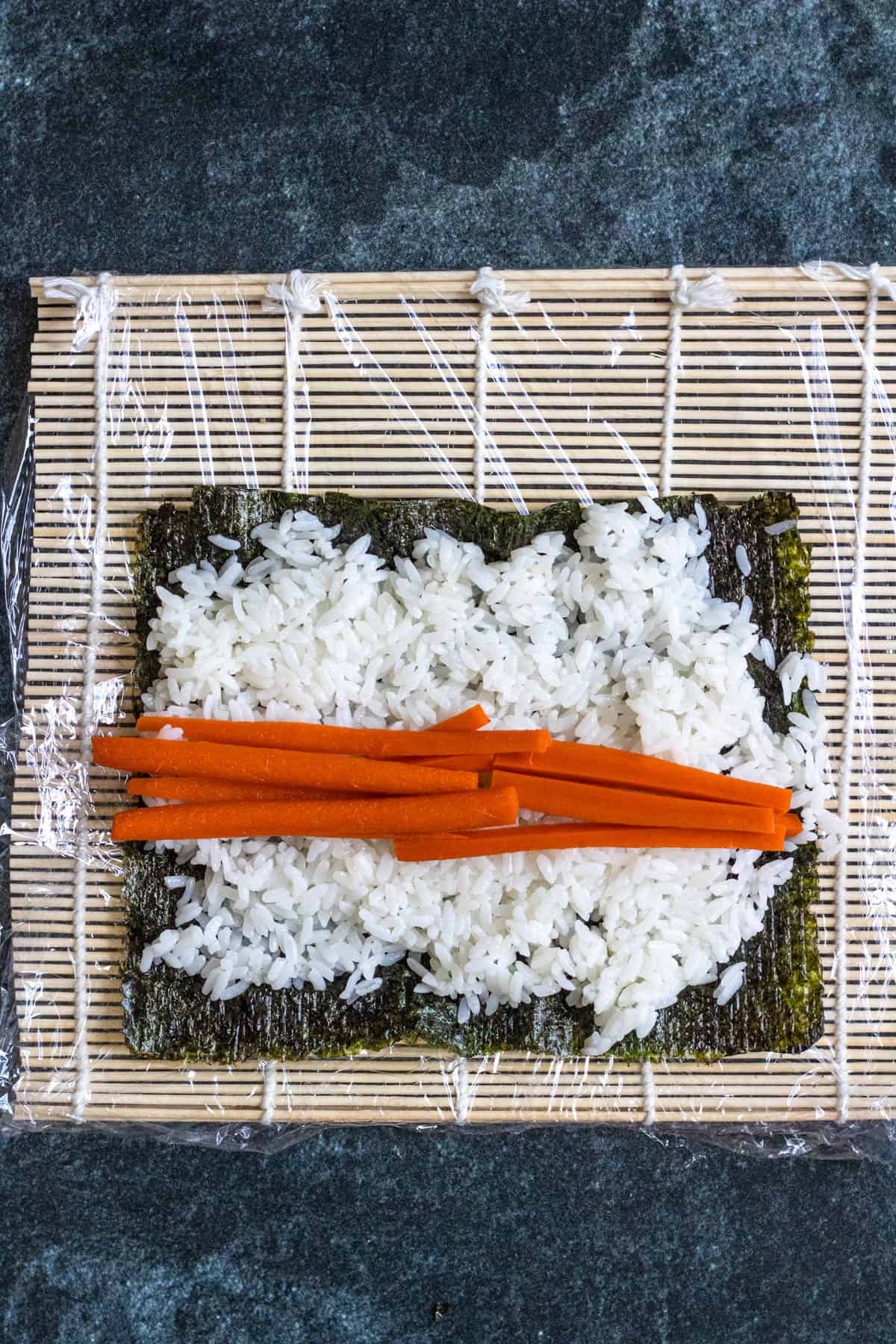
Cover your sushi mat in plastic wrap for easy cleanup.
Cut the top ¼ of the nori sheet off. Place the remaining ¾ of the nori sheet on your sushi mat, shiny side down.
Place about ⅓ of the rice on the nori sheet and spread in a thin layer.
Cut the pickled gobo into quarters lengthwise, so that you have very thin and long pieces of gobo. Place about 4 of these cut pieces of gobo in the center of the rice.
Step 3: Roll Your Sushi
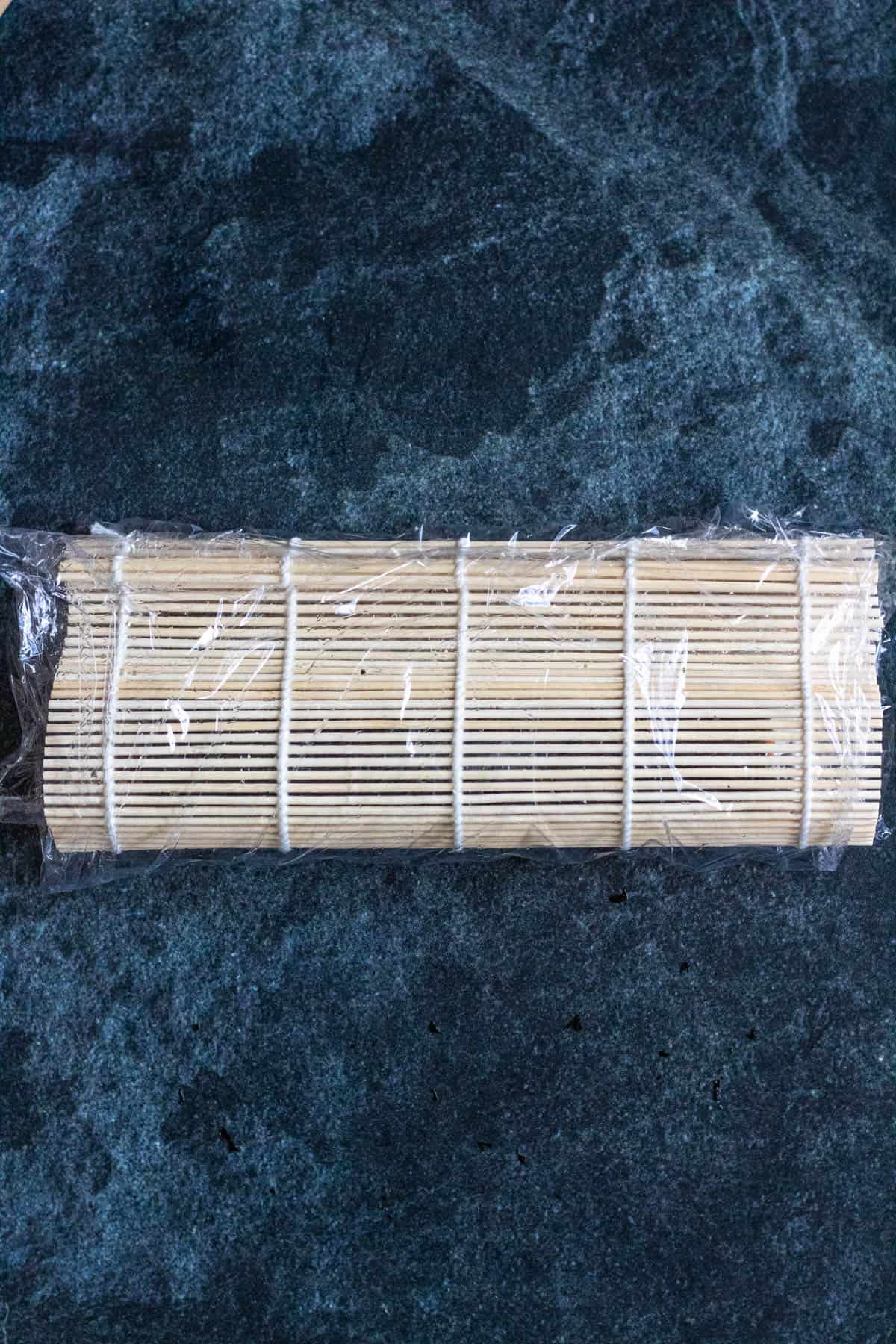
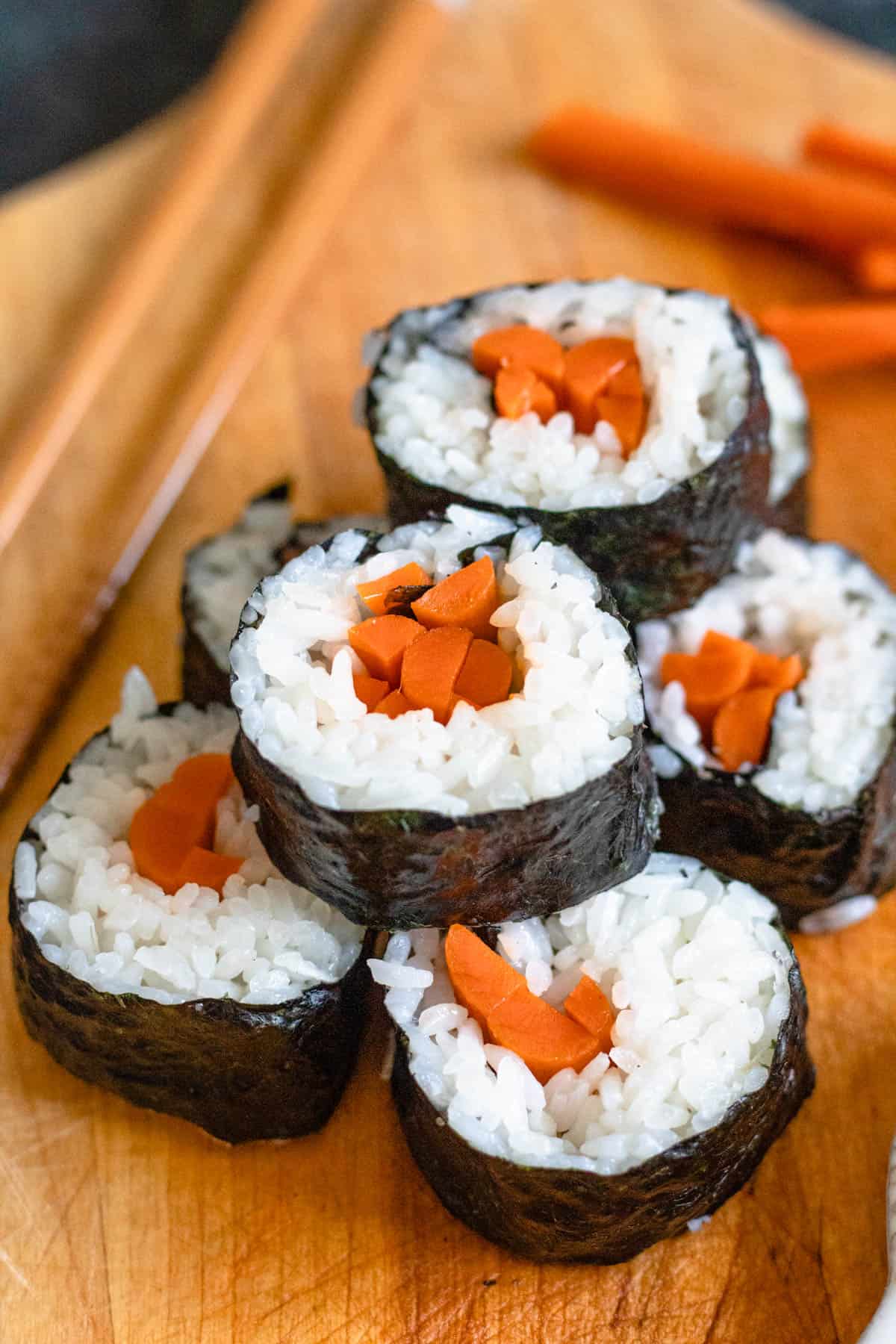
To roll the sushi, place your thumbs under the sushi mat. Then lift the edge of the mat closest to your belly up and over the filling in the center.
Use your hands to press the length of the log, making sure that all of the sushi ingredients are staying together. Continue lifting and rolling the edge of the sushi mat until the sushi is in one roll. Gently press with your hands again to make sure that the rice on the outside edge is sticking together.
If you need visual instructions for this process, I enjoyed watching this video.
Remove the roll from the mat. Remove the plastic from the mat. Cut each roll into 8 pieces. Top your gobo sushi roll with sesame seeds and serve with soy sauce if you wish.
Enjoy!
Expert Tips
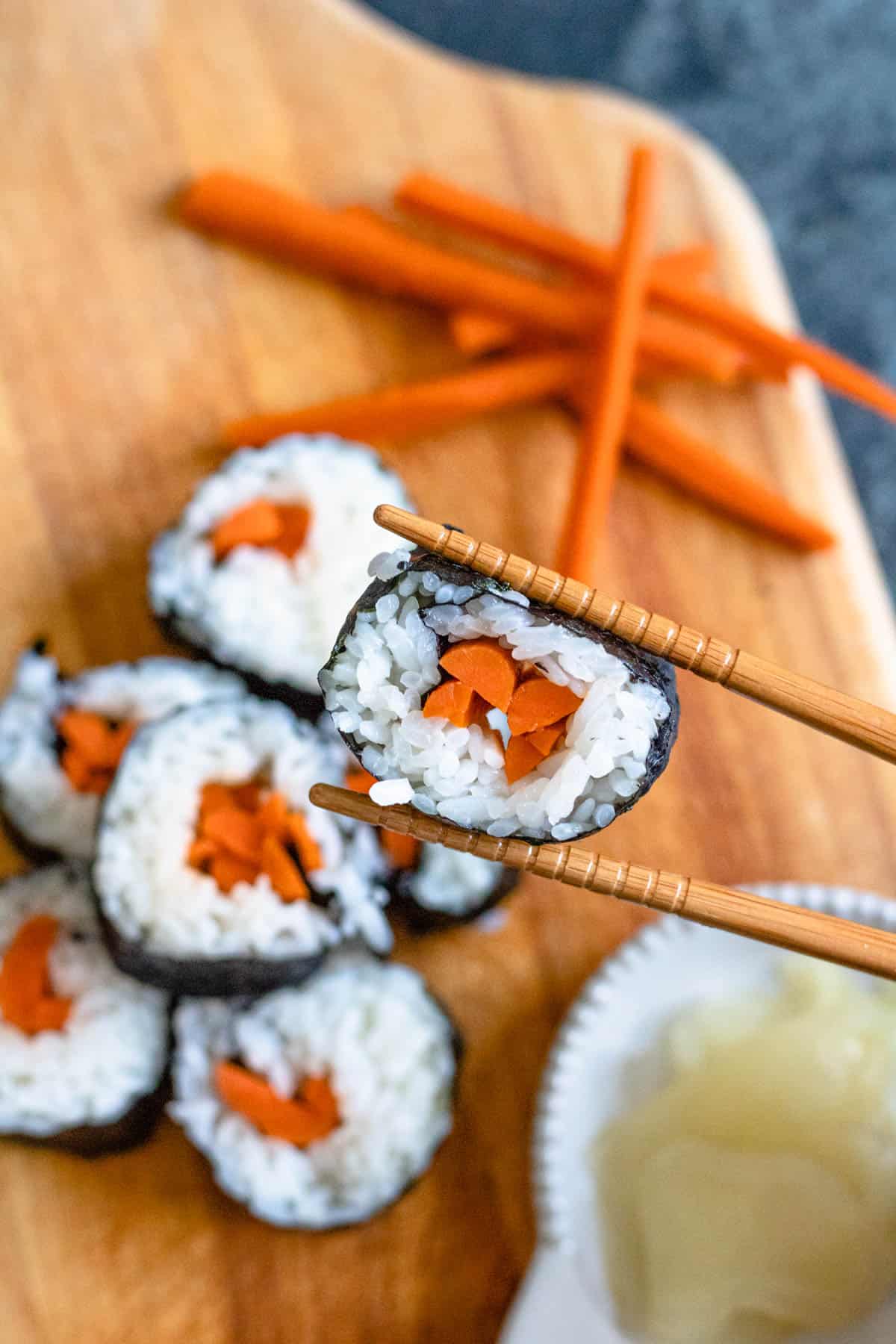
- One of the biggest complaints about making sushi is having a roll that falls apart. As you roll, make sure you apply good pressure to the roll to squeeze it together with each turn.
- It’s best to use rice that is warm, but not hot or cold. If you make your rice fresh, let it sit for about 30 minutes at room temperature for the best texture. Using hot rice may create sticky rolls while cold rice may not stick together at all.
- If you don’t want to purchase a sushi roller, you could try rolling your sushi into more of a cone shape. If you prepare your sushi this style, this type of hand-rolled sushi is called temaki sushi.
How to Prevent Your Hands from Sticking to the Rice
Sticky rice can sometimes make rolling your sushi tricky. Having some liquid on your hands will prevent sticking.
You can mix ¼ cup water with 2 teaspoons of rice vinegar and keep it in a small dish nearby as you roll. If your hands begin to stick to the rice, dip them in the liquid and gently pat your rice back into place to continue rolling.
FAQs
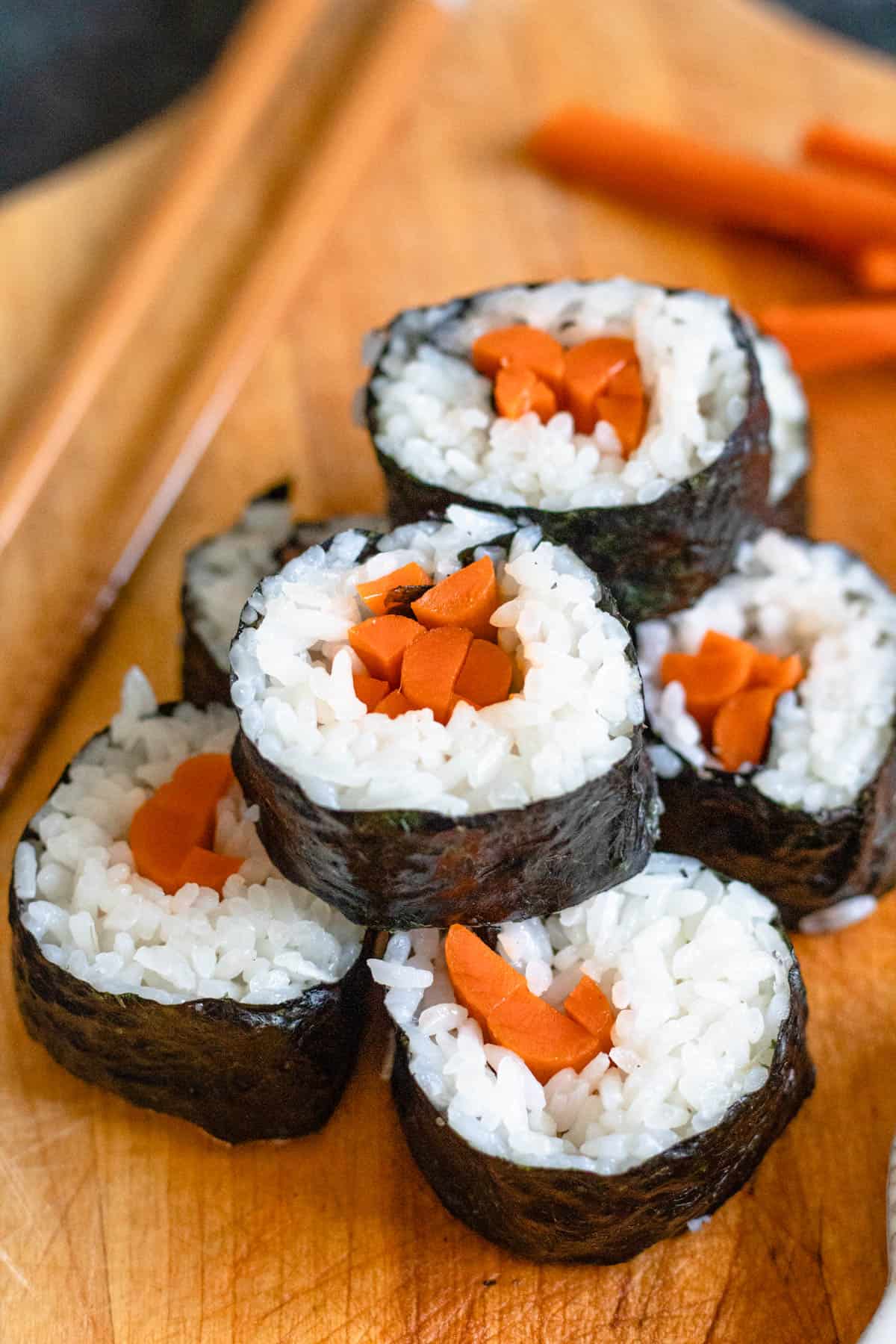
Gobo root has been used for centuries in holistic medicines. It was used to clear up issues on the skin and also to calm sore throats and ward off a cold.
It’s a good source of fiber, potassium, magnesium and antioxidants. It’s also low in sodium and calories.
Healthline.com goes so far as to say it removes toxins from the blood, may inhibit cancer and is an aphrodisiac.
Gobo root tastes crisp and sweet. It has a mild earthy flavor. When it is pickled for sushi it retains the crisp texture, but the vinegar and sugar in the pickling process take the distinct flavor to a whole new level, making it slightly tangy.
Gobo is a common add-on to many sushi rolls. It’s great with fish, shrimp or crab, but if you want to keep your rolls vegetarian you could also pair it with cucumber, pickled radish (oshinko), carrots, avocado or cream cheese.
You may find gobo in a California roll, spicy salmon roll or futomaki roll
Yes! This recipe is great if you’re looking for a vegan sushi option.
Unfortunately sushi is one of those dishes that’s just better fresh. You could try storing your gobo sushi in an airtight container but your nori will become moist and sticky and just not as appetizing as when it was fresh.
If you’re not a fan of pickled gobo or are having trouble finding it, but are still looking for good veggie options, try making cucumber rolls. You could also try carrots, pickled radish, pickled cucumbers, or even green pepper.
Did you like this recipe for Gobo Sushi? If so, read below to check out these other recipes I picked out just for you:
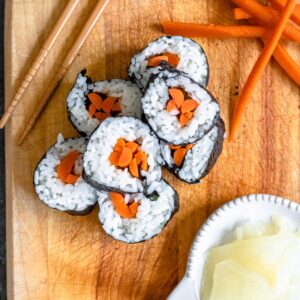
Gobo Sushi
Equipment
- Sushi Rolling Mat
- Plastic Wrap
Ingredients
- 1 cup uncooked sushi rice, cooked according to package instructions
- 2 tbsp seasoned rice vinegar
- 3 sheets nori
- 3 oz pickled gobo
Instructions
- Once cup of sushi rice has been cooked, pour the 2 tbsp of seasoned rice vinegar over the rice. Mix to coat the rice, then set the rice aside to cool a bit.
- Cover your sushi mat in plastic wrap for easy cleanup.
- Cut the top ¼ of the nori sheet off. Place the remaining ¾ of the nori sheet on your sushi mat, shiny side down.
- Place about ⅓ of the rice on the nori sheet and spread in a thin layer.
- Cut 3 oz pickled gobo into quarters lengthwise, so that you have very thin and long pieces of gobo. Place about 4 of these cut pieces of gobo in the center of the rice.
- Then roll the sushi. To roll the sushi, place your thumbs under the sushi mat. Then lift the edge of the mat closest to your belly up and over the filling in the center.
- Use your hands to press the length of the log, making sure that all of the sushi ingredients are staying together. Continue lifting and rolling the edge of the sushi mat until the sushi is in one roll. Gently press with your hands again to make sure that the rice on the outside edge is sticking together.
- If you need visual instructions for this process, I enjoyed watching this video.
- Remove the roll from the mat. Remove the plastic from the mat. Cut each roll into 8 pieces.
- Serve and enjoy!
Video
Notes
- Pickled Gobo (Burdock Root): You can find gobo already pickled in most Asian supermarkets. If you’re feeling extra ambitious you could even pickle your own burdock root!
- Sushi Rice: Japanese sushi rice is the best rice to use for this recipe. You can find it at an Asian supermarket. It’s a short-grain rice that is chewy and sticky and is perfect for holding a roll together. You can use plain white rice if that’s all you have on hand but your roll may dry out a little quicker or not hold together as well.
- Rice Vinegar: Rice vinegar adds great flavor to your rice and brings out an extra layer of flavor in your gobo too. It also makes the texture perfect for rolling.
- Seaweed (Nori): You can find sheets of seaweed in most supermarkets in the Asian food aisle or you can purchase it online.
- One of the biggest complaints about making sushi is having a roll that falls apart. As you roll, make sure you apply good pressure to the roll to squeeze it together with each turn.
- It’s best to use rice that is warm, but not hot or cold. If you make your rice fresh, let it sit for about 30 minutes at room temperature for the best texture. Using hot rice may create sticky rolls while cold rice may not stick together at all.
- If you don’t want to purchase a sushi roller, you could try rolling your sushi into more of a cone shape. This type of hand-rolled sushi is called temaki sushi.




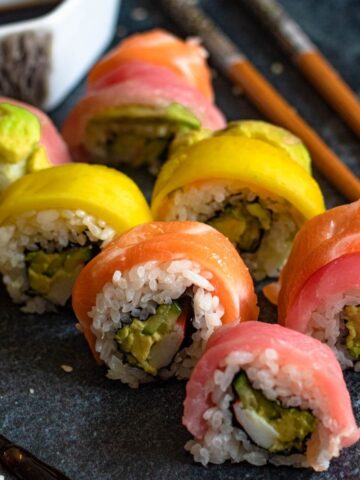
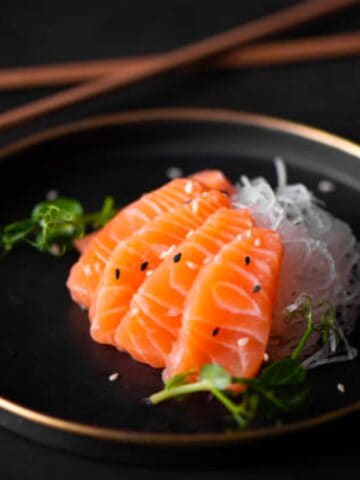
Leave a Reply